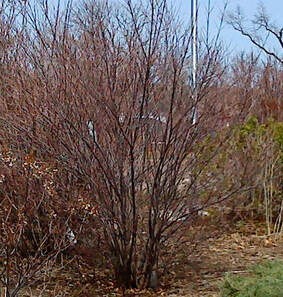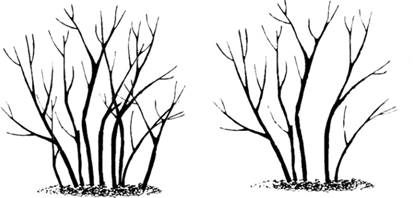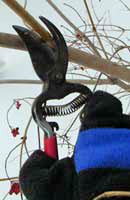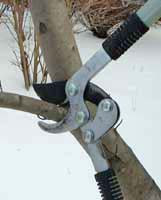 Now is a great time to get out there and prune your deciduous scrubs while they are still in a dormant state from their long winter nap and have not started leafing out yet. Many shrubs have a lovely natural shape and if you have made allowances for their mature size, will need only minimal pruning. Cutting out dead and diseased branches is important to the health of your shrub. Proper pruning is also important when you want to control the size and shape of your shrub or when it has gotten totally out of control and you need to rein it in. Severely pruning an overgrown shrub that is beginning to fail can rejuvenate at. Overgrown spirea and potentilla can be cut down to a few inches from the ground for complete rejuvenation while other scrubs would not survive such extreme pruning and will need to be rejuvenated over two or three years of less severe pruning. Do not prune shrubs that flower in the spring such at lilac, weigela, or forsythia as you will be pruning away the flower buds for this years spring display. Prune these right after they are done flowering unless they are in a bad way and will not give you a good display of flowers then go ahead and prune for future year flowering. Late winter/early spring is great for pruning spirea, potentilla, boxwood, viburnum, American Cranberry bush and ninebark (if you do not care about blooming) among others. Google "when to prune" followed by the type of shrub for specific instructions for your shrubs. Thinning out dead or old branches, heading back a branch to the joint with another branch or to a leaf bud, rejuvenating or cutting back the entire shrub severely, sheering with hedge sheers to create shape, and pinching off shoot tips are the basic pruning techniques. These techniques may not be appropriate for all shrubs. Without leaves, you will be able to see the wood and the shape of the shrub very well. Look it over closely before beginning for dead or diseased branches and any branches that run counter to the prevailing direction of the other branches or are rubbing up against other branches. Now notice which branches look old and which are the newer growth by diameter. Now that you have really looked at the plant, begin by cutting out all the dead and diseased wood down to the ground. Then prune out old wood, the biggest and gnarliest branches, down to the base of the plant or as close as you can get. If the plant is too overgrown, this may be difficult; gloves and even goggles will help you survive this ordeal. Next, look at those branches that are counter to the direction you want to encourage or are rubbing against other branches causing damage. Cut these down to just above the collar of the branch (where the branch meets the main branch) or cut them down to the ground if need be. Try not to prune more than about one third of the total volume of the scrub. Lastly, you will prune for size and shape where appropriate. Keep in mind that when pruning for size and shape, unless you are sheering a hedge, you will want to look carefully at the branch to determine the best place to cut. Cut back only as much as you need to of the secondary branching. Cut just above an outward facing leaf bud cutting at an outward and upward angle being careful not to damage the leaf bud or, if you must cut the whole secondary branch, cut just about the collar (not through the collar) where the branches meet. You will need: Gloves to protect your hands from sharp twigs and spikes. Eye protection is a good idea too. You will want a good set of sharp hand pruners. For larger shrub a bypass lopper (as opposed to an anvil type lopper) and a pruning saw are recommended. Make sure these tools are sharp and clean. They should also be disinfected between cuts with rubbing alcohol or 10% bleach to water to reduce the risk of spreading disease. Here are some useful link from pruning deciduous shrubs
0 Comments
Leave a Reply. |
|
| North Country MGV | gARDEN bLOGS |
Location |
|



 RSS Feed
RSS Feed